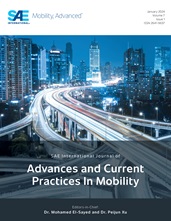PC-Crash is an accident reconstruction program allowing the user to perform simulations with multibody objects that collide or interact with 3D vehicle mesh models. The multibody systems can be a pedestrian, a motorcycle, or a motorcycle with a rider. The multibody systems are comprised of individual rigid bodies connected by joints. The bodies can be of various size and stiffness along with varying coefficients of friction and restitution. Additionally, the joints can be tailored to define pivot types and range of motion. The current motorcycle models in PC-Crash are generic and do not resemble a sport bike type motorcycle. They are only globally scalable such that you cannot adjust length, width, or height independently. However, the user can adjust each body and/or joint individually as needed.
A model was created that resembled a modern sport bike motorcycle. In addition, a multibody rider was mounted on the motorcycle in a typical sport bike riding position. The model was validated using the three instrumented tests that were the subject of previous research (SAE 2020-01-0885). The aforementioned tests involved moving motorcycles striking moving cars. Impact configurations involved the classic T-bone type accident, while others were more complex in nature involving significant longitudinal and lateral impact forces to the motorcycle.
The test results were compared to parameters calculated in PC-Crash. Results such as Delta-V, yaw rate and overall post impact trajectories of the motorcycle, rider and movement of the target vehicle were compared to the data from the instrumented test vehicles. In total the multibody rider/motorcycle model was able to simulate the three staged crash tests very well. The overall trajectories of both the rider and motorcycle aligned very well with the overall motion seen in the crash test.
